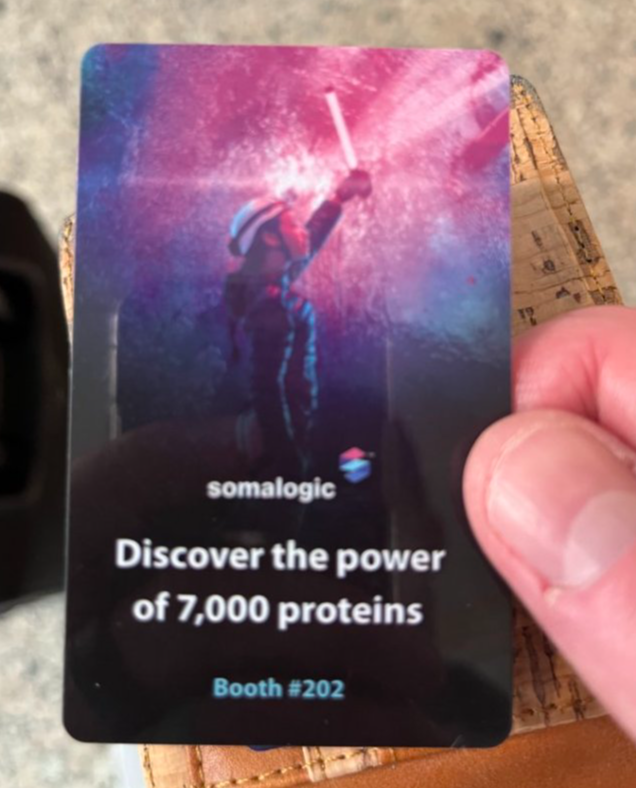Didn't get to go to HUPO 2022 because someone mistakenly thought you said "Cancun" instead of "Quintana Roo" when requesting permission to go?
This was my first HUPO since Vancouver, which was awesome, so I had some high hopes despite the location.
My time is very limited and my email thingies are very very full, so a couple of big things first:
1) Holy crap. Half of these "next gen" proteomics things are protein microarrays.
I'm not even joking. Look, no stress, you can get good data out of protein microarrays, but I definitely thought that a lot of these new and exciting companies were....I dunno...newer? excitinger...? something that hasn't been ar
2) The big "next gens" are coming for us with complementary solutions and load and loads of marketing money.
I met the SomaLogic marketing team --
(These aren't really them. Similar strategy, though.)I did spend some time asking a really patient scientist with O-Link a lot of really dumb questions and I'm not the only person that did that (though I bet the other people asked smarter questions). But now I understand how that one works. It sure ain't cheap. You need to add about $300k worth of things to an Illumina NovaSeq (list about $1.5M, but Illumina is a kit revenue based company, you sign up for enough kits they'll figure out a way to get you one). Then you need the reagents and flowcells from Illumina AND the OLink kits per sample. Once you get to a stupid high n -- it makes sense. If you don't have 40,000 samples lying around ready to go, you probably want to line those up first before asking for getting set up. They do have a little PCR based protein analyzer for massive targeted validation and I think they sold more than a few this week and for sure at least one of the big NovaSeq based ones.
3) DIA is THE method for LCMS based proteomics. I'll thank Dr. Naomi Diaz for prioritizing this one on my take-away list. I think she said "did you see any DDA in this entire day's poster session"? And I checked my notes and I'm not sure I did. The paradigm has shifted. People are clearly still doing DDA proteomics, but it is increasingly rare. When someone sorts out the PTM prediction and localization thing for DIA, it might be over. When you do find someone doing DDA, they're probably doing glyco or phospho or chemoproteomics or something.
4) Everyone is AlphaFolding or MetaFolding. Monday's plenary was someone from EBI or EMBL (it'll be in my daily recap if I get to it) which was awesome. Dude totally just broke down the different scores for AlphaFold stuff and where people are most likely to misinterpret the quality of the data. Just about every poster that focused on a specific protein included supporting(?) evidence for the 3D structures.
5) This is may be a weird takeaway but for me it was one of the most optimistic and important (particularly for patients) takeaway from the final day of poster sessions. I went through an entire aisle of posters where the focus was finding clinically relevant secondary inhibitors for tumors that had developed new resistances -- and they were all just about perfect. Institution independent, instrument independent, country independent -- when it comes down to one of the things where proteomics can make an impact in someone's life right now -- everyone is doing it right. PB 03.94 - 99 are all underlined and say the words "really really good resistance mechanism studies". I'm generally really critical of these studies, so I don't write a lot about them here on my portal of proteomics positivity, but what a great thing to see.
More later -- I've got like 15 pages of notes to sort through!



No comments:
Post a Comment